Slashed food rations leave children's education in balance
Dec 11, 2018
According to the 2018 report by Uganda Bureau of statistics, that over 8 million Ugandans are living in poverty

James Lokut, a P.2 pupil of Kosiroi primary school in Kakikekire parish, Tapac sub-county in Moroto district, sleeps on an empty stomach due to lack of enough food at home.
His hope is at school where he's assured of one meal a day. Besides, the school does not provide break porridge. And the youngster must wait for several hours until lunch is served.
Knowing the food burden at home, Lokut is forced to carry his 2-year-old sibling to school in order to share a plate of food. But the portion served cannot satisfy the two brothers. "I never had enough porridge for supper and did not have breakfast. I am hungry," Lokut cried out to his class teacher.
He shares the same plight with dozens of children in Kosiroi and others in districts of Napak, Nakapiripirit, Abim, Kotido, Amudat, and Kaabong in the region.
According to Martha Lomakol, the Food Focal Person (FFP) of Kosiroi p/s, majority come to school hungry and do not know when and where to get the next meal. She attributes their plight to the slashed the food rations by World Food Programme (WFP) last year.
"The rations provided reduced from 150grams to 75grms of food per child and cannot satisfy the hungry youngsters hence affecting their school attendance and performance," she said, adding that pupils usually complain of stomach ulcers and at some point blackout in class especially during tests and examinations due to starvation.
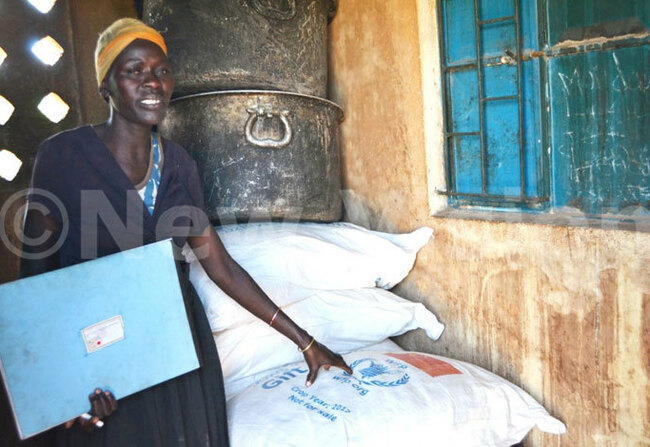 Martha Lomakol, the Food Focal Person (FFP) of Kosiroi p/s. (Credit: Davis Buyondo)
Martha Lomakol, the Food Focal Person (FFP) of Kosiroi p/s. (Credit: Davis Buyondo)
Records at Kosiroi indicate a growing dropout rate. At least 100 (mostly girls) out of the 300 pupils who were enrolled this year have dropped out due to the slashed rations.
In efforts to address the food shortage, the school's Parents Teachers' Association (PTA) meeting resolved that parents contribute some food to supplement WFP rations but only one did took action.
Denis Cherirey, the Kosiroi P/S Deputy Head teacher, confirmed the dropout rate saying food insecurity is common in several schools and Kakikekire communities.
In his explanation, break porridge was phased out and only lunch retained since 2017.
"The food shortage at home often prompt children to keep a portion of their meager lunch to either eat when they go back," he recounted.
Sabina Cherop, one of the parents, said she always feels bad sending children to school without breakfast but she has nothing to do about it.
She explained that since she understands the importance of education, she would send her children to school whether there's enough, little or no food.
Tapac P/S
Stella Nagir and William Ujangole, both P.7 candidates at Tapac primary school in Akaliwol village, can hardly revise or concentrate in class on empty stomachs.
Nagir is head girl while Ujangole is head boy.
They claim the little food cannot last in the stomach adding they get hungry soon after lunch.
Nagir complained that it is even worse over the weekend and in school holidays since they do not know where to get food.
"We have nothing to do about it only to develop an attitude that can drive me to pass Primary Leaving Eaminations (PLE) well, she said.
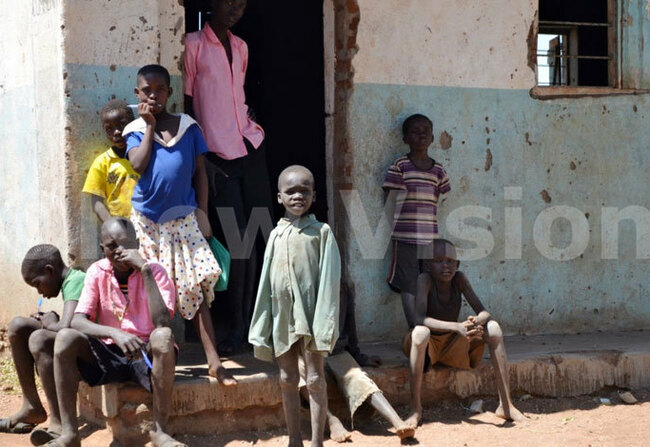 At least 100 (mostly girls) out of the 300 pupils who were enrolled this year have dropped out due to the slashed rations. (Credit: Davis Buyondo)
At least 100 (mostly girls) out of the 300 pupils who were enrolled this year have dropped out due to the slashed rations. (Credit: Davis Buyondo)
According to Ujangole, they are sometimes tempted to take a bigger share of the food but being leaders, they have to lead by example.
If it were not for chasing his dream of becoming a doctor, he would have left school four years back.
David Livingston Iworotoi, the school's FFP, noted that all children hunger and poverty move hand-in-hand with negative consequences on the physical growth, social, and emotional abilities of children.
In 2014, he said, community members would camp at school to have lunch until when the administrators fenced the premises.
Unlike in other parts of the country where children yearn to have holidays, Iworotoi argued that those in Tapac and others in Karamoja region wish they could keep in school from Monday to Sunday and throughout the holidays in order to have food.
However, the school administrators have appeal to WFP to increase on the rations to enable them prepare break porridge and lunch for the disadvantaged children.
District officials
Paul Oputa, the Moroto District Education Office (DEO), said the enrolment drastically reduced since last year after WFP reduced on the food rations in schools which also affected performance at district level and national examination, mainly PLE.
He added that most of the children who drop out of school end up in mines, stone quarries, looking after livestock, marriage, and charcoal business or do casual jobs.
In addition, he noted that the most affected children are those in deep rural schools especially in Tapac and Rupa sub-counties while for those in urban centres parents can afford to buy some food for their children.
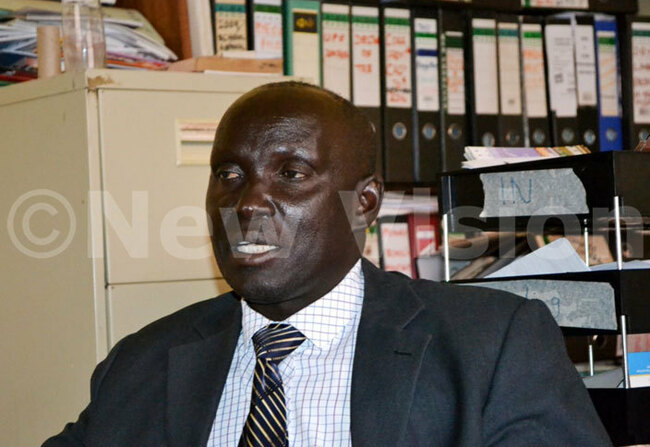 Paul Oputa, the Moroto District Education Office (DEO).(Credit: Davis Buyondo)
Paul Oputa, the Moroto District Education Office (DEO).(Credit: Davis Buyondo)
According to Oputa, climate change has greatly affected Moroto for several years whereby district on many occasions fail to produce enough food yet most of the parents are poor hence being dependent on the aid.
"Should one day WFP pull out and there's no government interventions, I am certain many schools will close down because it is at school where they get nutritious meals," he said.
Mark Loli, the Moroto District Agricultural Officer, argued that there's still need for more food rations to support children in school and disadvantaged households.
He further said that with the growing agro-pastoralism coupled with different government projects such as the Third Northern Uganda Social Action Fund Project (NUSAF3), Operation Wealth Creation (OWC), Youth Livelihood Program (YLP), the residents will be in position to improve their livelihood and provide some food for their families than depending on livestock alone.
Joseph Lomonyang, the Moroto Local Council (LC5) Chairperson, said the situation worsened last year.
He appealed to WFP to buy more for school children saying food is cheaper in regions and districts which grew enough last seasons.
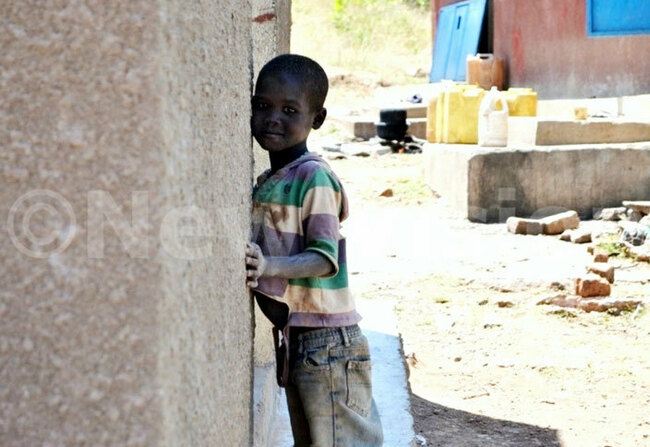 (Credit: Davis Buyondo)
(Credit: Davis Buyondo)
UNICEF ECDC centres
According to Agnes Alwenyi, the UNICEF Early Childhood Programme Officer-Karamoja, WFP does not provide food for Early Childhood Development Centres (ECDC) in Karamoja.
She explained that there are 400 centres in the region and 252 being functional near or within schools.
The rest are seasonal centres that open during crisis situations such as floods and others.
Alwenyi said that the centres are recommended to care for children between 3 to 5 years yet WFP does not budget for their meals.
"We have appealed to WFP to provide food for the ECDC centres in vain. As a result, the school administrators resort to dividing the rations to feed the children who are not budgeted for hence creating a hug reduction of the rations schools," she told.
WFP denies food cuts
Ryan Anderson, the Programme In-charge, refuted claims of food cuts in Karamoja schools.
He said that WFP provides each child with 150grams of maize, 50grams of beans, and 10gms of vegetable oil per day.
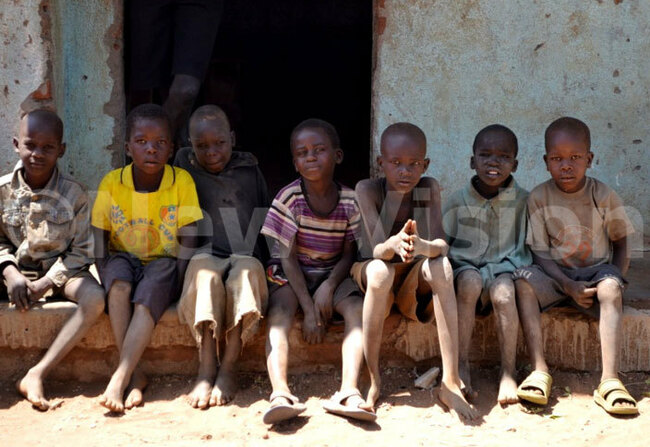 (Credit: Davis Buyondo)
(Credit: Davis Buyondo)
According to Anderson, the rations are enough for schools to provide mid-morning porridge and lunch for each child.
"WFP provides the maize in form of grains because they have a longer shelf life compared to maize flour. But it does not prohibit schools from grinding the maize into flour if that is more favourable for the schools," he noted.
In the next five years, he added, WFP will work with the Government of Uganda and other partners to make school feeding increasingly home-grown.
Home-grown school feeding, he explained, is a practice where nutritious food varieties served to school children are bought from the communities that surround the schools.
Still in the same period, Anderson said the programme will support the Government in developing localised procurement mechanisms that enables good nutrition diversified diets; building a local supply chain network and stimulating local production and marketing to enable the sourcing of quality food.
Also to improve food storage and reducing post-harvest losses while improving health and nutrition; and strengthening the capacity of District Local Governments to deliver social protection systems in Karamoja.
"These activities will assist the Government to reach targets set in Sustainable Development Goal 2 for addressing hunger and malnutrition in Uganda," he said.
Dependency
Karamoja is one of the regions with the highest level of poverty and has relied on food relief since the colonial government.
Being a semi-arid region, it suffers frequent droughts prolonged drought, floods, pests and diseases which affect food production.
Mark Loli, the Moroto District Agricultural Officer, said residents in the green zone are able to produce some food such as maize, sorghum, beans, potatoes among others, due to the good soils and some rainfall.
He added that those in the dry zones especially in Moroto can hardly grow some food due to poor soils and little or no rainfall.
According to the 2018 report by Uganda Bureau of statistics, that over 8 million Ugandans are living in poverty. This was attributed the increasing droughts.
